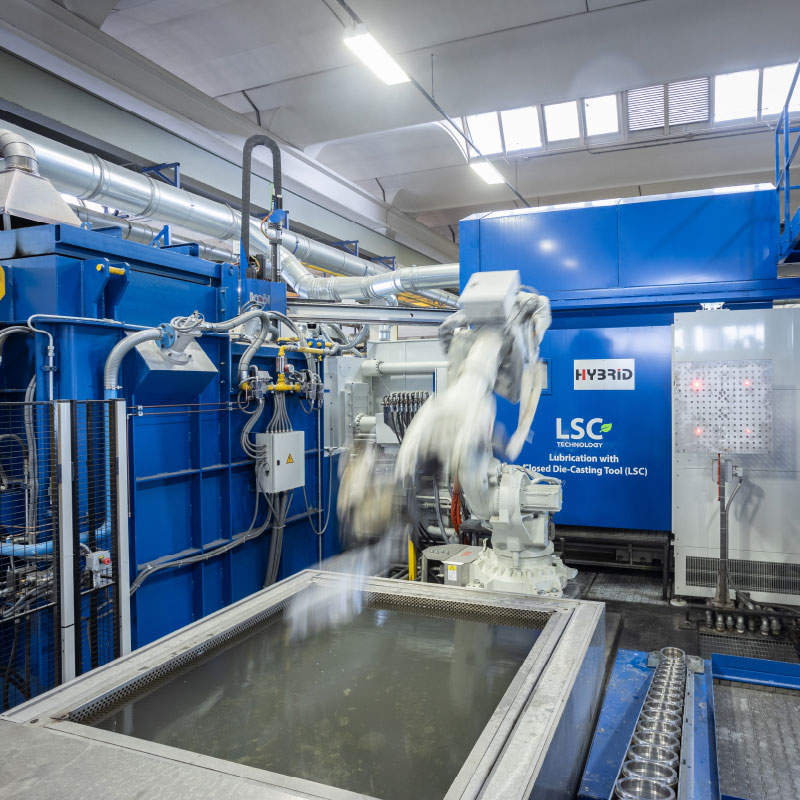Lubrication with Closed Die- Casting Tool
THE NEW FRONTIER IN DIE CASTING
The new LSC TECHNOLOGY invented by Fonderie Maestri makes
the lubrication process GREEN and improves production efficiency
In the die-casting process, the mould surfaces are sprayed with release agent before each mould is made. The release agent serves to lower the mould temperature and to create a film that aids the release of the aluminium from the mould steel.
Our patented design (henceforth LSC) is to carry out the Lubrication with Closed Die- Casting Tool process.

How it works
Through the creation of ‘ports’, the LSC unit introduces and removes the release agent from the cavity of the closed mould.
There is the possibility to adjust many parameters to optimise the process: quantity of lubricant, air pressure, time, direction of flow through the ports.
WHAT IS NEEDED
LSC unit
This is an external unit attached to the die casting machine. There is software interfaced with the die casting machine that regulates the lubrication process. The unit is directly connected to the mould with a plug and play system.
Mould adaptation
It is necessary to modify the mould to create 2 or more ‘ports’ for the entry and exit of the release agent. At any time, the mould can be used with the conventional lubrication system.
Control software
The control software has been developed to allow seamless integration with the die-casting cell and makes it possible to control and manage all process parameters easily and intuitively.
ADVANTAGES ACHIEVED WITH LSC
Making the lubrication process GREEN
thanks to the reduction of:
noise
(deleted)
disposal
(it is possible to reuse the same release agent throughout the day)
emissions
(reduced by 90%)
Improving production efficiency by REDUCTION of:
machine preparation time
e.g. no more need to prepare lubrication nozzles.
The robot is only used as a manipulator, thus avoiding possible problems with all lubrication fluids.
mould wear
LSC reduces thermal shock on steels by decreasing mould stress and wear.
rejects
LSC allows much more air in the mould to be evacuated than in the traditional process.






